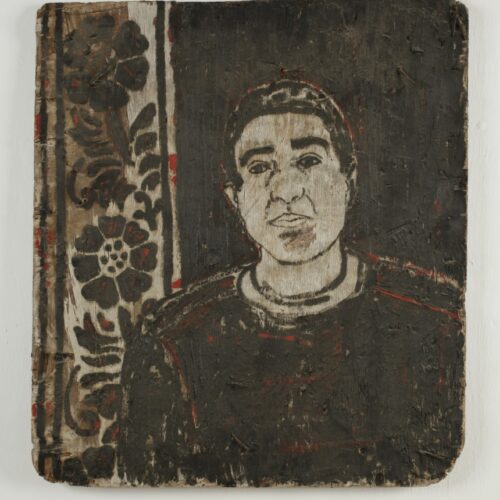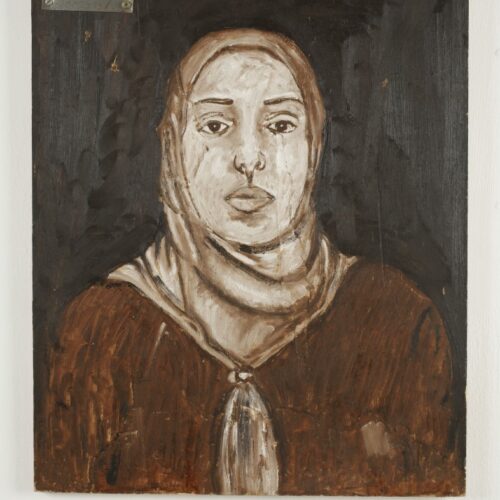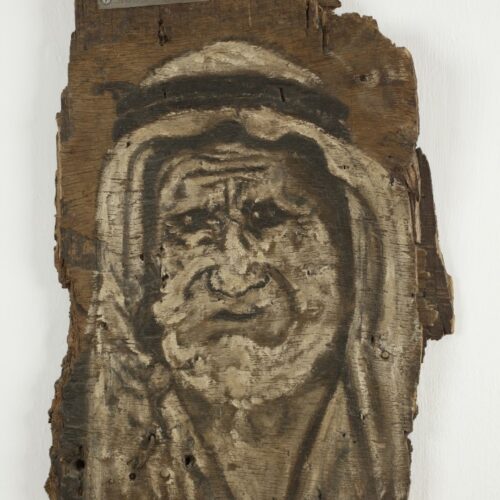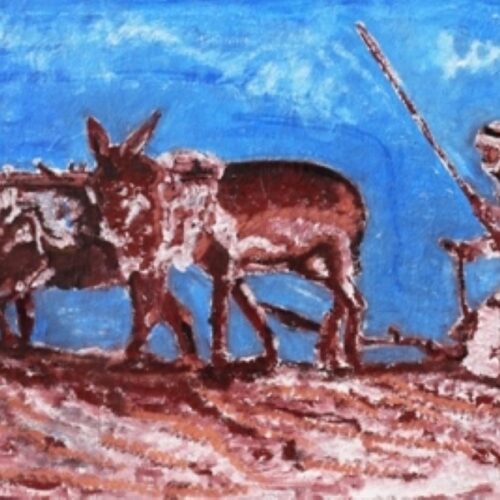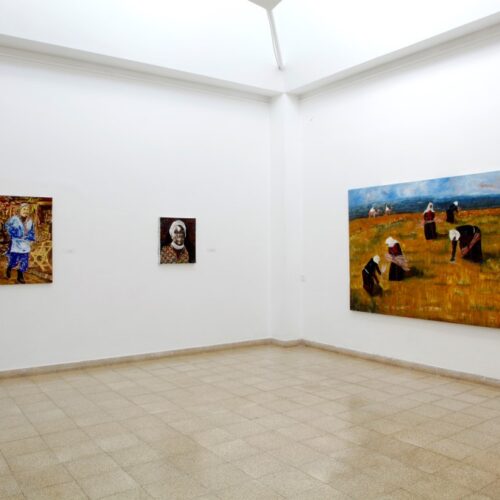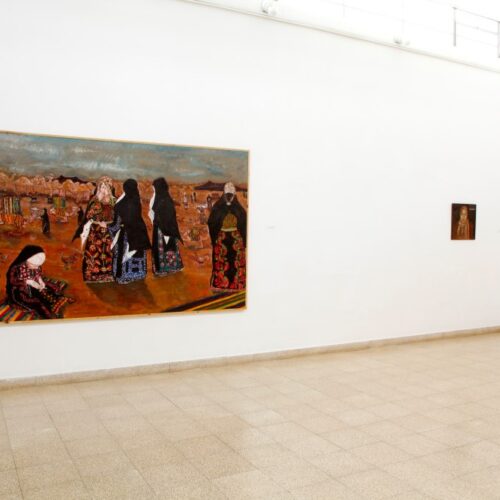Khader Washakh has been painting since childhood and painted during his high school years in Gaza. His materials are mainly crayons and a surface – doors, boards and also the walls of his school. The subject: portraits of those who are close to him, friends and family members. The earliest portraits shown in the exhibit are from 2006, all drawn from the shoulders up, focusing on the face in the portrait. Washakh avoids psychological descriptions, human faces in extreme emotional states, pain and crying or laughter. In his portraits the corporeality of the drawing surface and the materiality of the mixed technique resemble an aversion to the experience of the person and to his presence that is assimilated in the viewer’s world. Some of the portraits have an iconic character, emphasized in the background work including the engraving of a decorative pattern. Many of the portraits are drawn from direct observation and others are drawn from photographs – these are of his relatives who live in Gaza, Jordan and the Sinai. Washakh has returned to drawing them over the years and the portraits document the changes wrought by time. More than anything, it seems that this is an attempt to preserve memory, to bridge the distance and time gap and about yearnings. “I am trying to preserve the portraits of my family and not just in my memory, but also in the environs; in Rahat, I want everyone to know them, even if they cannot meet, so they are present around me, in my house, among my family and my children”.
In 2008 he began to contend with subjects from his Palestinian environment. “I tried to forget what happened to my aunt, an event connect to my family’s honor, part of which I saw with my own eyes. The drawing helped me connect to things that occur in our society and to absorb them through the drawing – for people do not know how to deal with the harsh experiences they undergo”. In the paintings shown in the exhibit, Washakh focuses on black-skinned women working in the fields, Nubian/Sudanese, who belong to the most stigmatized group in Bedouin society, “they are viewed like slaves living off leftovers, there is no equality, and no marriages with them. I drew a portrait of a Sudanese-Bedouin woman who today is the principal of one of the best schools in Rahat and who earned two degrees – all by herself”.
Washakh notes that his art and art-history studies contributed to his technical level and to his understanding of the language of art. “I have always drawn what I feel, what I love, but the art studies helped me connect to other artists who analyzed themes that are important to me too”. He recalls Cezanne when he deals with color, Gauguin, in his observation of the other, the Impressionists in his pursuit of the everyday. At the Mishkan Le’Omanut in Ein Harod he met Haim Atar’s paintings. “I am interested in seeing his use of color, how he included it in his paintings of humans, I love his sketches, how his hand moves, his line. The connection to Haim Atar is important to me because most Israeli art deals with the environment, while he truly dealt with the person.”
Khader Oshah
Portraits & Surroundings
Curator: Galia Bar Or
August 2011-January 2012


